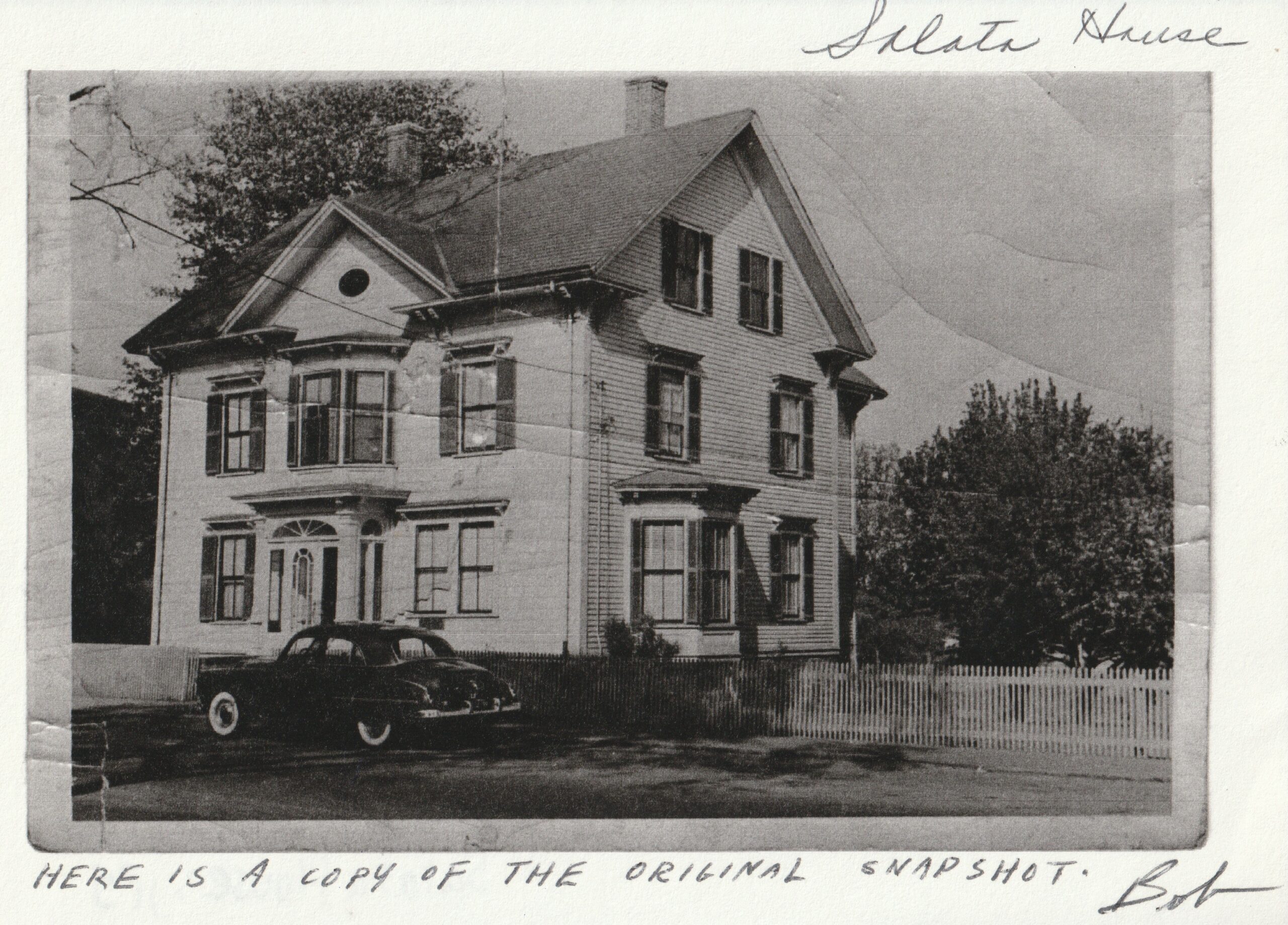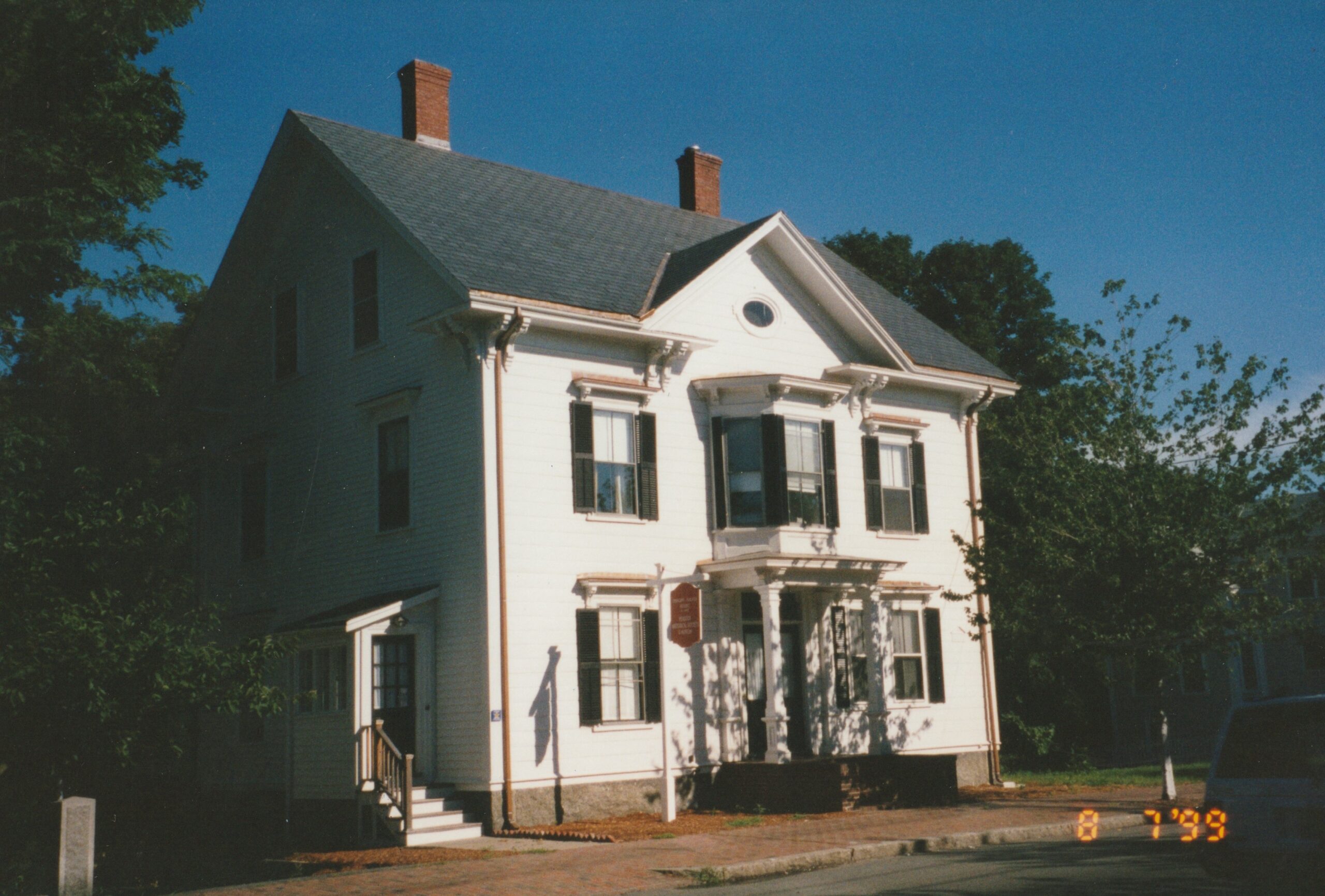- Osborn-Salata House, circa 1940
- Osborn-Salata House, August 1999
This circa 1852 Italianate house was built for Thorndike and Sarah Daniels and later occupied by Dennison Osborn and his family. In the early 20th century, it was converted to a boarding house for local artisans, businessmen and factory employees. From 1945-1997, the house was owned by Dr. Benjamin Salata, a dentist, and his wife, Celia, a music teacher. In 1997, Celia Salata donated the house to the Peabody Historical Society. The Osborn-Salata House now serves as the home of the Society’s the Clyde and Mary Hudnall Military Room and rotating exhibit space.
The Osborn-Salata House stands proudly in Peabody’s Washington Street Historic District and is of wooden construction and Italianate design. It was built by Dennison W. Osborn and Nancy Jane Osborn after they purchased the land from Thorndike and Sarah Daniels.
Dennison Wheeler Osborn (1816-1894), a tanner, married Nancy Jane Stevens (1819-1891), a native of Methuen, on December 26, 1844. At first, they lived across the street where St. Paul’s Church stands today. An interesting coincidence connects the house with the family prior to the Society’s acquiring it.
Prior to her wedding, friends of Nancy Jane Stevens made a friendship or signature quilt for her as their special gift. It contains squares carefully stitched and signed by these friends in india ink. Mrs. Margaret Petraske acquired the quilt at a sale and for many years stored it with care to protect it from damage. Following her death in accordance with her wishes, the quilt was given to the Historical Society in 1940. It’s been part of the Society’s vintage quilt collection for more than fifty years as a precursor of the Osborn-Salata House becoming its property.
The Osborns moved into the house in early 1850s with their daughter Alice (1846-1902) and son Hazen (1849-1878). Dennison Osborn came from a family with deep roots in what was then South Danvers. He was descended from William Osborn (1642/44-1729/30) who was a farmer in the Central Street area and Samuel Osborn (1675-1744) who was one of the founders of the first official schoolhouse in Peabody when it was called the Middle Precinct, Salem.
In about 1736, the Osborns founded a pottery and succeeding generations successfully operated the business on Central Street. The high quality of their redware was well-known throughout the area and beyond. Surviving pieces of their pottery are considered quite valuable by experts in the field. Peabody Historical Society is fortunate to have several pieces of this redware in its collection.
Nancy Jane and Dennison Osborn lived at 33 Washington Street for approximately 30 years. Their daughter Alice married Harry Osgood, the son of Dr. Joseph Osgood, who owned the house from 1882 to 1907. Their son Hazen became a Civil Engineer and never married.
At some point, the 17-room house was divided into apartments. Peabody’s town directories of the early 1900s list an assortment of people as residents, including George S. Cushman, Machinist and then Treasurer of The Carter Press Corporation, Danvers, James J. Foye, Sorter, Frank P. Hanrahan, Silversmith, T. Willard Burke, Druggist, and Irving M. Winer, Physician; just to name a few.
In 1907, the ownership passed from the Osgood family to Elizabeth and Samuel Messon (1907-1914), then to Alice Hanrahan (1914-1916), occupation shoe stitcher. The property passed to James and Marie Barry (1916-1945), and then to Benjamin and Celia Salata (1946-1998). From the mid-1940s to the mid-1970s, Dr. Benjamin Salata operated a dental practice in the house. Some artifacts remain in the house and are examples of the dentistry field of long ago. Many Peabody residents were Dr. Salata’s patients and have shared their experiences with us.
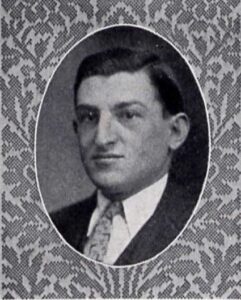
Benjamin Salata, Yearbook, Boston University, 1927
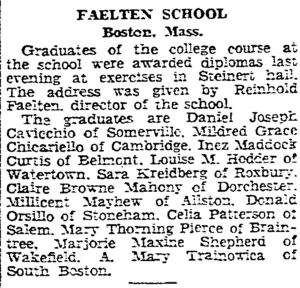
Celia Patterson Salata graduated from Faelten Music School, Boston Herald, June 19, 1932
Mrs. Celia Salata generously gave the house to the Peabody Historical Society on January 1, 1998. Since that time a dedicated group of volunteers directed by Joe Donlon cleaned out the house, applied bright and colorful wallpaper and fresh coats of paint. Sanded floors gave them a new glow, and electric and plumbing systems were upgraded. This enormous task was accomplished in record time due to the cooperation of local tradesmen and the efforts of our volunteers. The Historical Society is fortunate to have received from Celia Salata, a gifted musician, several items that were part of her musical career. This musical legacy includes a baby grand piano, which is displayed in the second-floor music room, named in Celia’s honor.
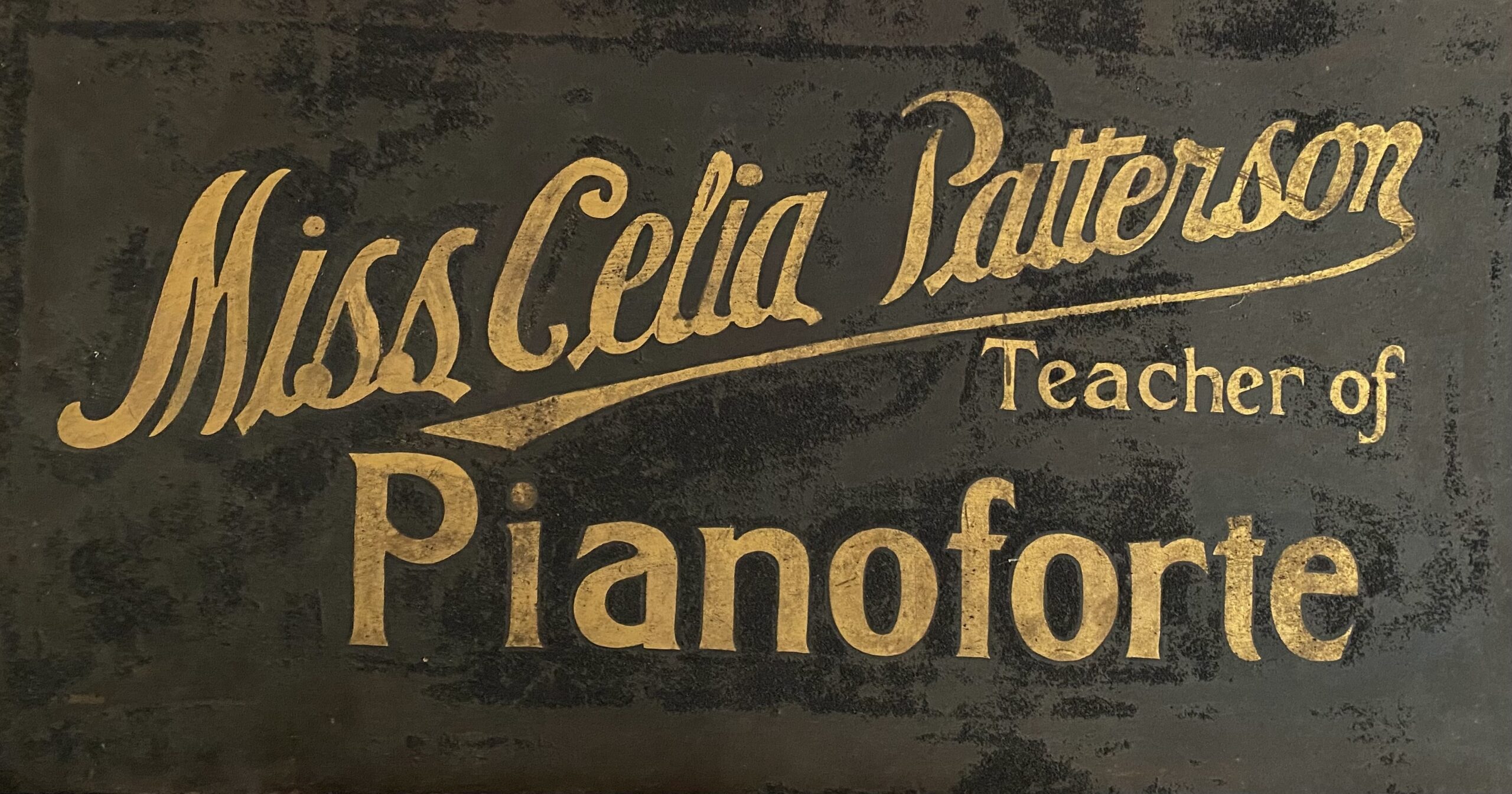
Sign Advertising Pianoforte lessons with Miss Celia Patterson (later Salata), circa 1935
Fortunately, over the years, little was done architecturally to change the integrity of the house making it well-suited to become a museum, with rotating exhibition spaces, a military gallery and collections storage.

